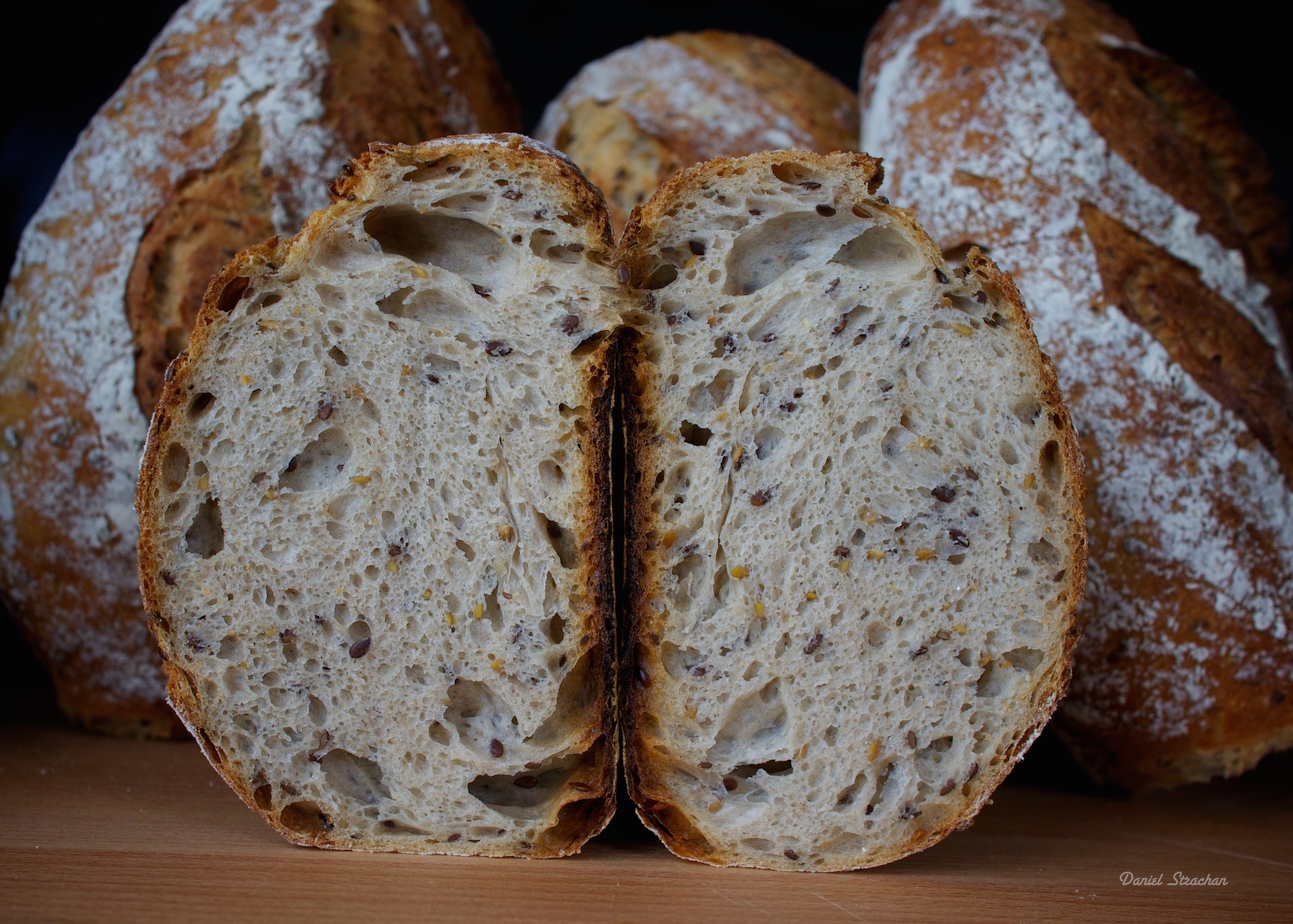
The week started off well, this batch of flaxy oat porridge bread tasted some kind of fine.
This is from a formula that's developed into a regular item here, it's made with type 1050 wheat flour from a nearby regional mill, from across the Rhein on the German side. A seperate levain, poolish and flax soaker, each make up 9% of the flour bill, oat porridge comes in at 5%. A 0.5% fresh yeast addition is added to the final dough, approx. total hydration is 78%ish. I slide these into a 240C oven and steam them well, the crust action is pretty decent.
cheers! Joy of gluten
This is from a formula that's developed into a regular item here, it's made with type 1050 wheat flour from a nearby regional mill, from across the Rhein on the German side. A seperate levain, poolish and flax soaker, each make up 9% of the flour bill, oat porridge comes in at 5%. A 0.5% fresh yeast addition is added to the final dough, approx. total hydration is 78%ish. I slide these into a 240C oven and steam them well, the crust action is pretty decent.
cheers! Joy of gluten

- Joyofgluten's Blog
- Log in or register to post comments
These look fantastic… and I think I am now suffering from 'crust envy' :-)
Thanks and yes go ahead and take a bite
I'm trying to figure out with the SD why do you need a poolish and fresh yeast too? Seems like lot of yeast that would take away from the flavor by making things go faster? Well done and
Happy Baking
That’s an excellent question Brownman. As you surely know, bread making can be kept as simple or made as complicated as we wish to make it.
With the bread in this post, and a few others, I’ve gone with a separate levain and poolish, with this combo I can easily steer the acidity and build the aroma/flavour profile that i’m after.The levain could easily be doubled and the poolish left out, or visa-versa, the results would also be interesting, but markedly different.The two preferments add up to 18%, the flax soaker is nicely gelled up with 120% water and the oat porridge is bound with 400%, this all develops flavour overnight and binds a good lot of water.The fresh yeast addition of 0.4%, I believe is beneficial to the final loaf. The 2.5hour DTO (final dough to oven)times work well with European flour, lower potential water uptake and proofing tolerance are issues.With this bread, I find that by keeping the acidity toned down, that the natural sweetness of the oatmeal porridge and flax gel, come through to a greater degree and combine in a loaf that bundles together a whole lot of flavour, has a moist crumb, good texture and pronounced crust action. cheersThanks
I'm referring to dry weight with the % given. The levain and poolish are at 100% hydration, the flax soaker at 120% the oat porridge is at 400%. Considering that i'm using weaker Euro flour, there is a lot of water bound up there in a dough that's fully comfortable to work off.
Last year, i did a blog post of this Flax/Oat Bread, it includes an interactive BreadStorm formula, it can be viewed in bakers% or weight, the yield can be altered for your convenience. In the mean time, I've changed my mixing proceedure some and cut the yeast back to 0.4% (fresh). You could mix it and finish it off anyway that you see fit. Chances are, your flour will be much stronger than the fair here, the absorption will differ.
There are also a few other formulas on the blog there, if you are looking for ideas.
The formulas can also be downloaded and used on a free iOS BreadStorm iPad app there is also a free Mac. app that you could use to create your own formulas (it's fully functional accept that you can't build a library with the free version)
Many satisfying bakes to you
cheers
daniel